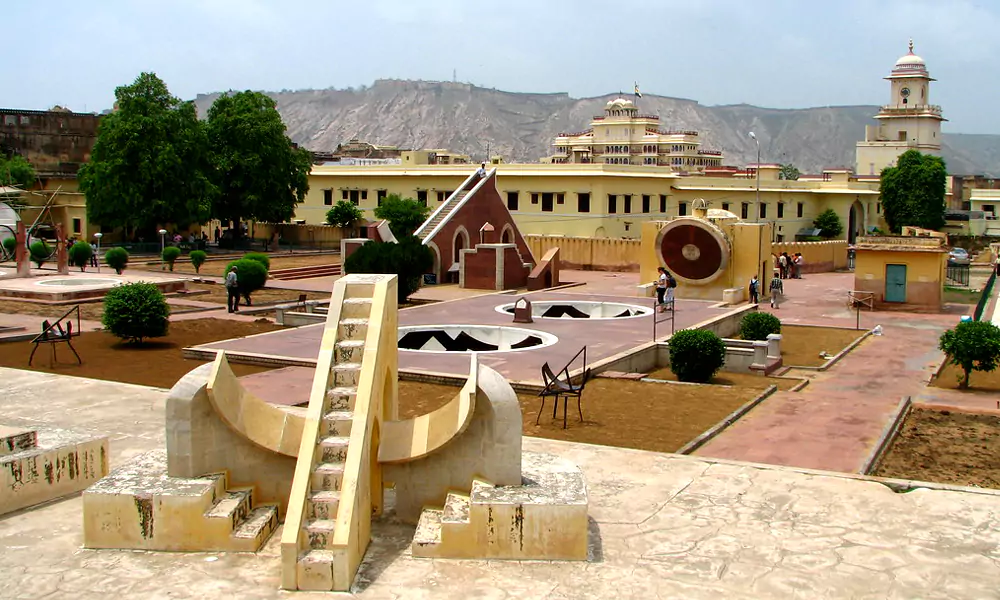
Nestled in the heart of Jaipur, the capital city of Rajasthan lies an astronomical marvel – Jantar Mantar. This UNESCO World Heritage site is one of the largest and best-preserved observatories of its kind. Built by Maharaja Sawai Jai Singh II in the 18th century, Jantar Mantar is a testament to the scientific prowess and curiosity of ancient India. An astronomical instrument is described as “Jantar Mantar,” derived from the Sanskrit words “Mantra” and “Yantra.” This means formula and instrument, respectively. Not just a collection of architectural wonders, this landmark functions as an observatory and has played a crucial role in the advancement of astronomical knowledge.
Timings and Ticket Price
Jantar Mantar is open to visitors throughout the year. The observatory operates from 9:00 AM to 4:30 PM daily, allowing ample time for tourists to explore its intricate structures and understand their functions.
Ticket Prices
- Indian Citizens: ₹50 per person
- Foreign Nationals: ₹200 per person
- Students (Indian Citizens): ₹15 per person
- Students (Foreign Nationals): ₹25 per person
Additional charges apply for guided tours and photography permits. To secure the most current ticket prices and schedules for your travel plans, check the official website or consult local tourism offices.
History
Maharaja Sawai Jai Singh II, a skilled astronomer and mathematician in the early 18th century, was responsible for the establishment of Jantar Mantar’s history. Five observatories across India by Sawai Jai Singh II, with Jantar Mantar in Jaipur being the largest and most renowned. Reflecting his deep fascination with the universe and its celestial bodies, they.
The construction of Jantar Mantar began in 1728 and was completed in 1734. Sawai Jai Singh II meticulously designed the observatory, incorporating elements from Islamic, Persian, and European astronomical traditions. His goal was to create a comprehensive set of instruments that could accurately measure time, predict eclipses, track celestial objects, and ascertain the positions of stars and planets.
Architecture
Jantar Mantar is a stunning example of architectural ingenuity and scientific precision. The observatory houses 19 large instruments, each with a specific purpose and design. The blend of aesthetics and functionality primarily in these instruments through their use of stone and marble as their main materials.
Key Instruments
- Samrat Yantra: Known as the “Supreme Instrument,” it is the largest sundial in the observatory. The Samrat Yantra can measure time with an accuracy of two seconds, making it a remarkable feat of engineering.
- Jai Prakash Yantra: This instrument consists of two concave hemispherical structures with markings that help locate celestial objects. It is used to measure the altitudes and azimuths of celestial bodies.
- Rama Yantra: A pair of cylindrical structures used to measure the altitude and azimuth of celestial objects. They are in such a way that the observer can stand inside and take accurate readings.
- Chakra Yantra: A circular instrument used to measure the coordinates of celestial objects in an equatorial coordinate system.
- Narivalya Yantra: This instrument comprises two sundials, one for measuring time in the local meridian and the other for measuring the time at 45 degrees from the meridian.
The cardinal directions align and calibrate each instrument for precise measurements. The architectural layout of Jantar Mantar is a blend of artistic elegance and scientific rigour, making it a unique monument that bridges the gap between art and science.
Significance
Historically and scientifically, Jantar Mantar carries great importance. It represents the zenith of medieval Indian astronomy and showcases the advanced knowledge and skills of Indian astronomers. The observatory played a pivotal role in improving the accuracy of astronomical observations and calculations, which were crucial for various aspects of life, including agriculture, navigation, and religious practices.
The significance of Jantar Mantar extends beyond its scientific contributions. It is a symbol of India’s rich cultural heritage and intellectual legacy. The observatory, a symbol of Maharaja Sawai Jai Singh II’s dedication and vision, is a reminder of his passion for science and arts as a ruler.
Jantar Mantar in 2010 was designated as a UNESCO World Heritage site, acknowledging its historical and scientific significance. It continues to attract scholars, researchers, and tourists from around the world, offering a glimpse into the astronomical achievements of ancient India.
Best Time to Visit
October to March is the ideal time to explore Jantar Mantar, as the cooler months offer a more pleasant experience. The weather plays a significant role in making Jaipur’s observatory and nearby attractions an unforgettable experience. The daytime temperatures are comfortable, allowing visitors to fully enjoy their experience without the discomfort of extreme heat.
In the early morning or late afternoon, the instruments are best observed and the midday sun is avoided for favourable lighting conditions. Visiting on weekdays can provide a less crowded experience, allowing for a more tranquil and absorbing exploration.
How to Reach
Jantar Mantar is conveniently located in the heart of Jaipur, making it easily accessible by various modes of transportation.
- By Air: The nearest airport is Jaipur International Airport, located approximately 13 kilometres from Jantar Mantar. From the airport, you can hire a taxi or use ride-sharing services to reach the observatory.
- By Train: Jaipur Junction is the main railway station in the city, situated about 4 kilometres from Jantar Mantar. The station is well-connected to major cities across India. From the railway station, you can take a taxi, auto-rickshaw, or use public buses to reach the observatory.
- By Road: Neighboring cities and states are well-connected to Jaipur by road. You can reach Jaipur by bus, car, or private taxi. The observatory is located near the City Palace, making it easily accessible by local transportation within the city.
Nearby Attractions
Jantar Mantar is near several other iconic attractions, making it a part of a rich cultural and historical circuit in Jaipur.
1. City Palace
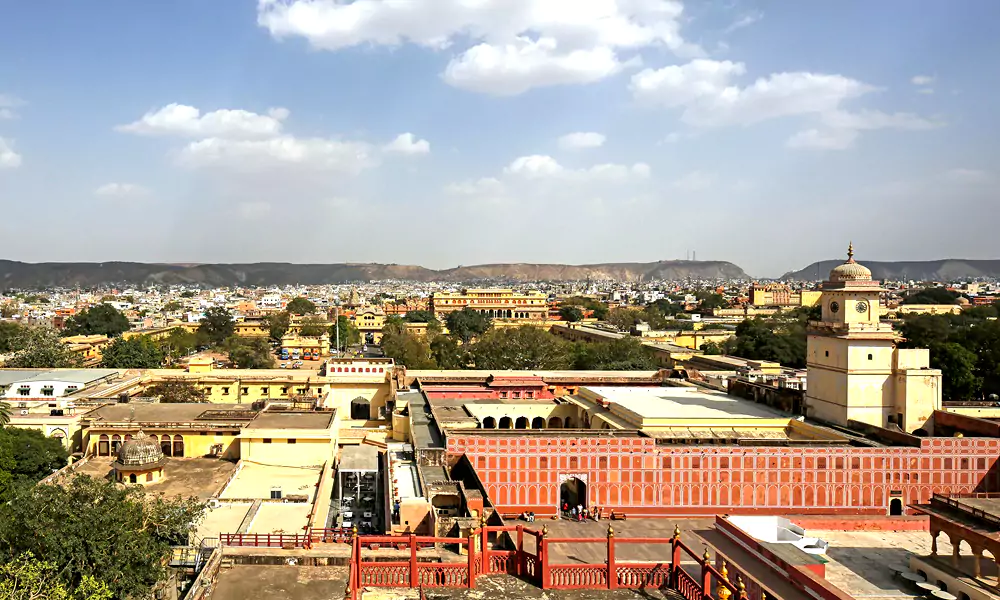
Located adjacent to Jantar Mantar, the City Palace is a magnificent complex that served as the royal residence of the Maharajas of Jaipur. It houses museums, courtyards, gardens, and historical artefacts, offering a glimpse into the royal heritage of Rajasthan.
2. Hawa Mahal
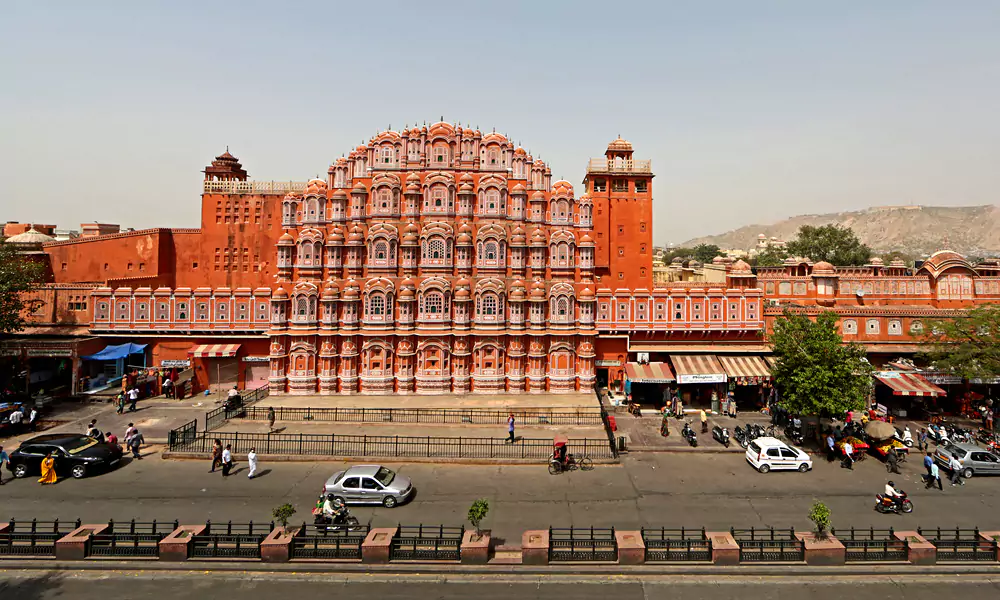
The Hawa Mahal, or “Palace of Winds,” is a stunning five-story palace known for its intricate latticework and unique architectural design. Royal women could enjoy street festivals unobserved from the building’s exterior.
3. Amer Fort
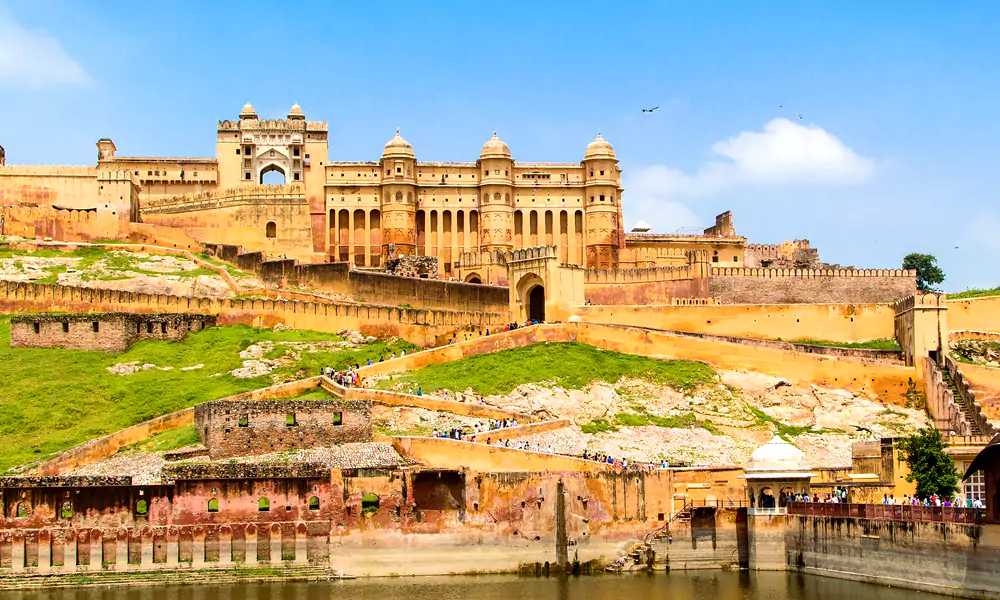
Amer Fort, a grand hilltop fort located approximately 11 kilometres from Jantar Mantar, showcases the harmonious fusion of Rajput and Mughal architectural styles. The fort offers panoramic views of the surrounding landscape and houses beautiful palaces, temples, and gardens.
4. Nahargarh Fort
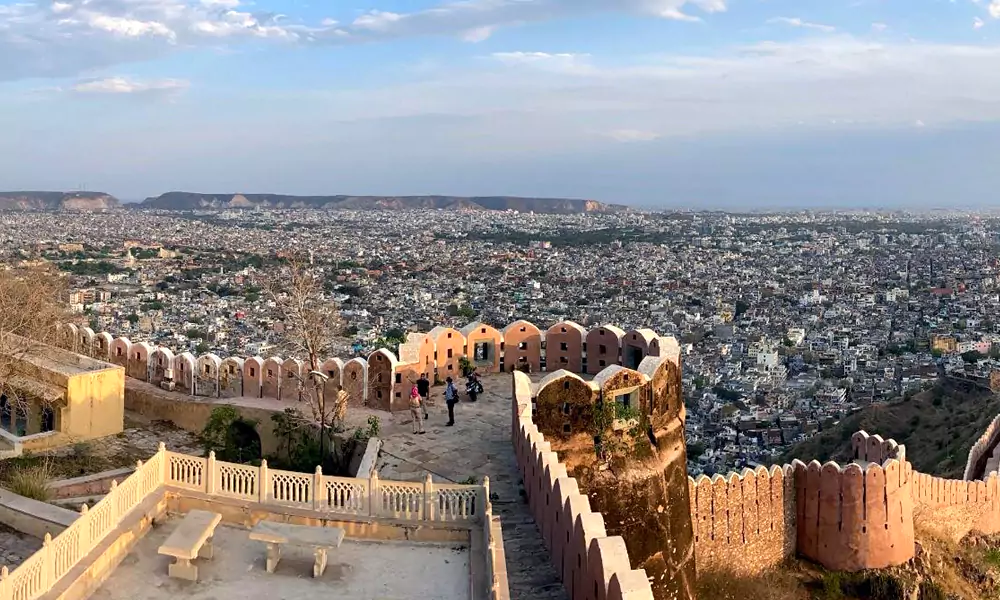
The Aravalli Hills house Nahargarh Fort, offers breathtaking views of Jaipur city. Renowned for its scenic beauty and historical significance, it was originally built as a retreat for the royal family.
5. Albert Hall Museum
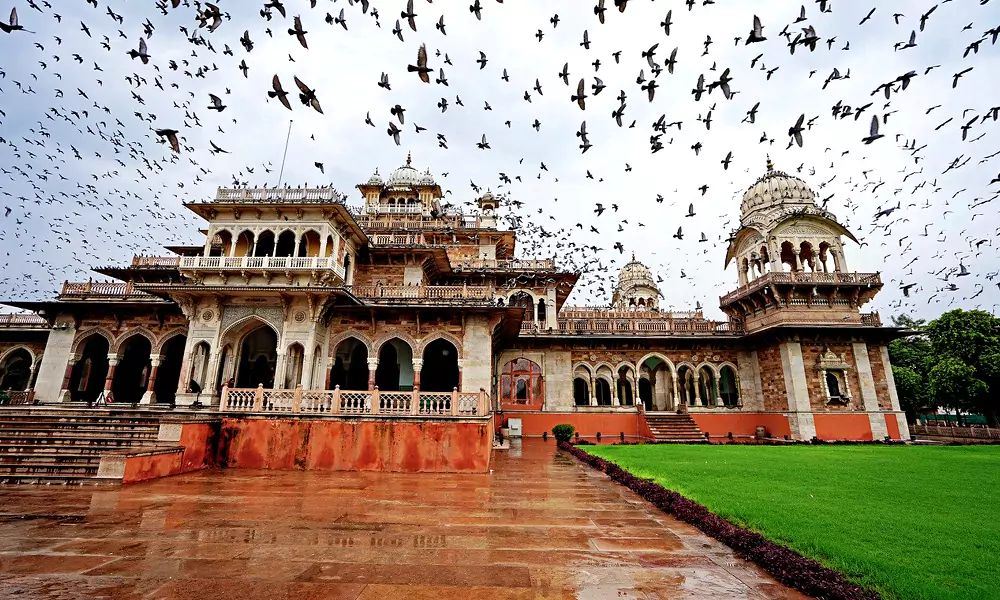
Located in Ram Niwas Garden, the Albert Hall Museum is the oldest in Rajasthan. It houses a vast collection of artefacts, including paintings, sculptures, textiles, and decorative arts.
Travel Tips
To get the best out of your trip to Jantar Mantar, here are some travel recommendations.
- Guided Tours: Opt for a guided tour to gain a deeper understanding of the instruments and their functions. Knowledgeable guides can provide valuable insights and historical context.
- Stay Hydrated: Carry a water bottle to stay hydrated, as exploring the observatory can involve walking under the sun.
- Photography: Bring a camera to capture the architectural beauty of the instruments. Ensure you have the necessary photography permits if required.
- Respect the Site: Jantar Mantar is a historical and scientific monument. Maintain decorum and avoid touching or climbing on the instruments.
- Plan: Check the official website or local tourism boards for any updates on timings, ticket prices, and special events. Planning can help you make the most of your visit.
Frequently Asked Questions (FAQs)
In the 18th century, Maharaja Sawai Jai Singh II of Jaipur built the astronomical observatory, Jantar Mantar. It houses a collection of large instruments used for measuring time, predicting eclipses, and tracking celestial objects.
Jantar Mantar was built to improve the accuracy of astronomical observations and calculations. It reflects the scientific advancements and curiosity of ancient Indian astronomers.
Yes, there is an entry fee for Jantar Mantar. The ticket prices vary for Indian citizens, foreign nationals, and students. Additional charges may apply for guided tours and photography permits.
Yes, guided tours are available at Jantar Mantar. Opting for a guided tour can provide valuable insights into the instruments and their functions.
Conclusion
Jantar Mantar in Jaipur is a remarkable blend of science, art, and history. This astronomical marvel stands as a testament to the advanced knowledge and intellectual legacy of ancient India. A trip to Jantar Mantar offers the chance to behold architectural wonders and uncover the scientific accomplishments of times long past. As you explore the intricate instruments and learn about their functions, you will gain a deeper appreciation for the ingenuity and vision of Maharaja Sawai Jai Singh II. A trip to Jantar Mantar is a journey through time, offering a unique perspective on the celestial wonders that have fascinated humanity for centuries.
